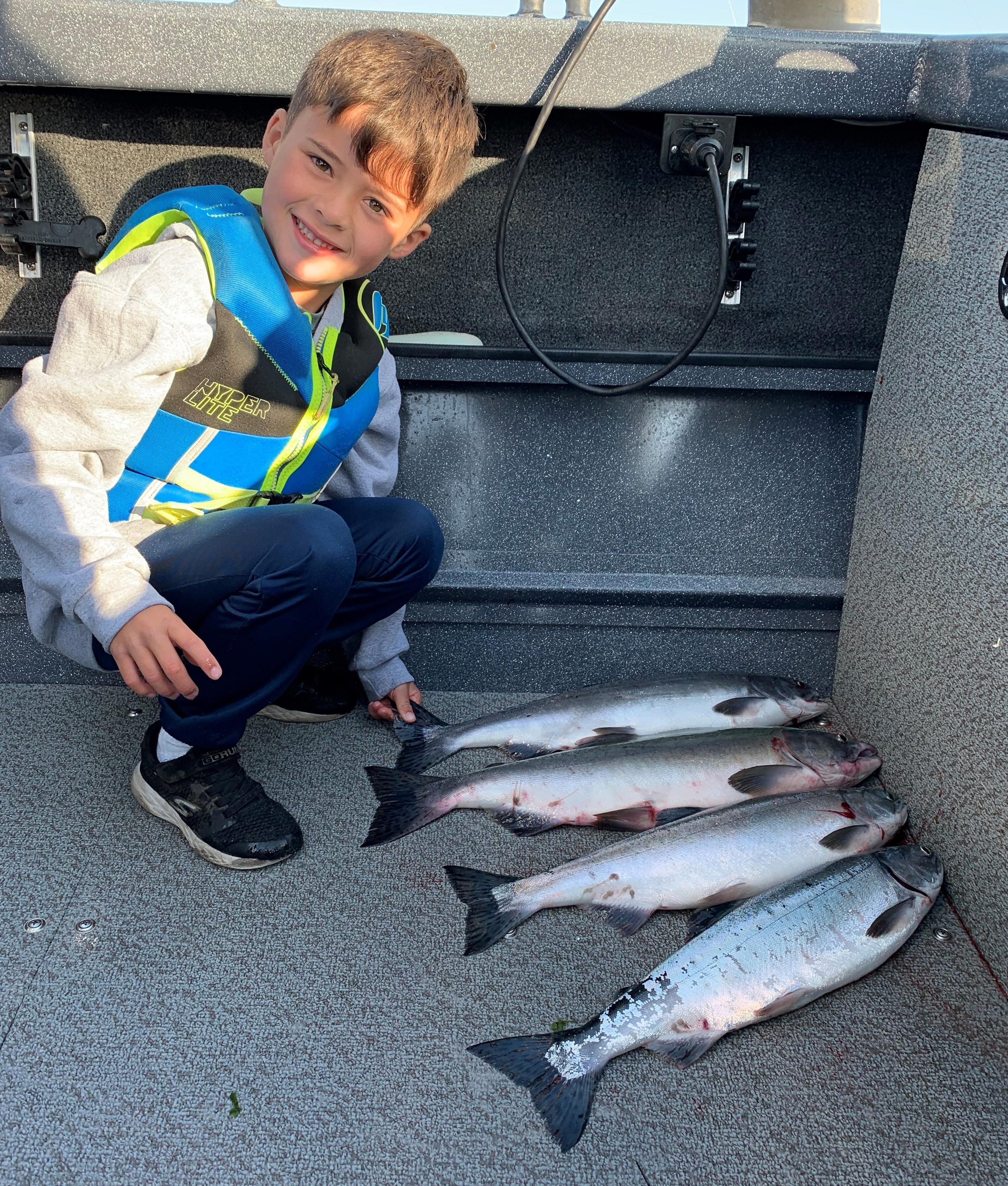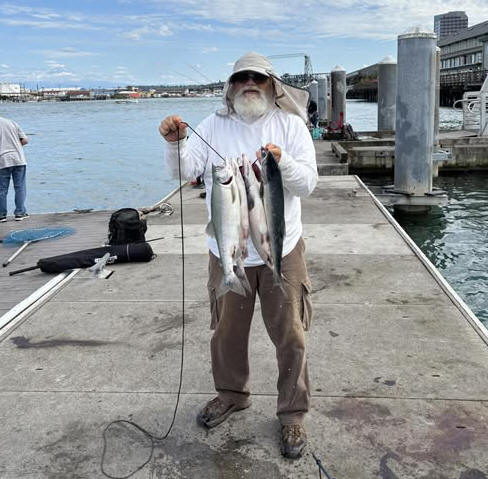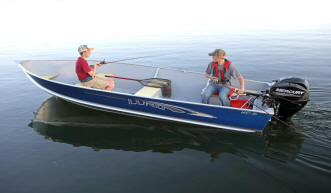Pinks are HERE! by Mark Yuasa
A barrage of pink salmon are now bee-lining into Puget Sound, and the next couple of months should provide ample opportunities in many marine and freshwater areas.
The hype about an expected Puget Sound pink salmon forecast of nearly 7.8 million — up 70% from the 10-year cycle average — began when the Washington Department of Fish and Wildlife (WDFW) unveiled the 2025 salmon forecasts on Feb. 28.
If the prediction pans out, it will be the third-largest total return on record, up from a 2023 forecast of 3.95 million and an actual return of 7.22 million. In southern British Columbia, the Fraser River pink salmon forecast is an epic 27 million and will contribute to fisheries in northern marine areas like the San Juan Islands.

A breakdown of the pink salmon forecasts are:
Green River, 1,835,366; Hood Canal, 2,420,610; Nisqually River, 1,503,704; Nooksack River, 97,370; Skagit River, 468,073; Snohomish River, 315,942; Puyallup River, 709,292; Strait of Juan de Fuca, 294,503; and South Puget Sound areas, 503,000.
The Stillaguamish River, pink forecast of 117,322 is a low forecast compared to past years and won’t allow for pink fishing opportunities in Marine Area 8-2 (Port Susan and Port Gardner) and the river itself.
There will be a two-bonus pink salmon daily limit for Marine Areas 5, 6, 7, 8–1, 9, 10, 11, 12, and 13 during the August to September timeframe. Opening and closure dates vary for each area. Refer to the WDFW fishing regulations webpage at https://wdfw.wa.gov/fishing/regulations or the Washington Sport Fishing Rules pamphlet at https://www.eregulations.com/washington/fishing/ for specific dates of when the two-bonus pink salmon daily limit applies to each marine area.
Recognizing a pink versus a Chinook
It is vital for anglers to be able to know the difference between a pink and a young Chinook. Especially when fishing in marine areas.
A pink has very large black spots on the caudal fin and back, and heavy oval-shaped black splotches on the upper and lower lobes of the tail. They also have a white mouth, a few teeth (if any), with a black gum line and tongue. Their scales are very small with no silver pigment on the tail.
Their nickname “humpies” or “humpy” comes from the dramatic hump that forms on the back of male pink salmon as they return to rivers and approach spawning time. Males also develop gnarly hooked upper jaw during spawning season.
In the marine environment, a Chinook has large black spots on back, dorsal fin, and both the upper and lower lobes of the tail. They have a dark mouth and black gum line and large prominent teeth, and a silver pigment on the tail.
A pink salmon averages 3 to 5 pounds but can grow up to 15 pounds or larger. They are the fastest growing of the five Pacific salmon species and mainly return in large numbers during odd-numbered years after spending two years in the ocean before migrating to local rivers.
The Washington state saltwater record for a pink salmon was caught on Aug. 25, 2001, by Jeff Bergman at Possession Point and weighed 11.56 pounds. The freshwater state record was caught on Oct. 11, 2007, by Adam Stewart in the Stillaguamish River (closed in 2025) and weighed 15.40 pounds.
The Puget Sound pink return usually begin to arrive in July, and the run peaks in mid-August. In South Puget Sound, the bulk returns during the last week of August and early September. Pink fishing in the Strait of Juan de Fuca and Puget Sound was very productive in 2021 and 2019 during late summer.

Tips and tactics
A pink likes pink and will chase just about any lure, spoon, jig, or fly as long as the color is hot pink. Part of the reason why they’re attracted to anything pink is that the color resembles plankton or krill, which is part of their main diet. While I direct your attention to that specific color scheme, be sure to keep red, chartreuse, and orange-colored presentations in your tackle box as well.
Smaller-size presentations seem to work best like a pink mini plastic squid (aka a hoochie) or spoons tied behind a 13- to 16-inch leader to a 1/0 white colored or silver dodger.
You can also toss a pink colored jig and let it sink about a foot per second from the surface down to about 80 feet. Once you feel the jig go slack, reel up and don’t set the jig hard because a pink has a soft jawline. You can also cast and retrieve a pink mini hoochie jig with a single or tandem 1/0 pink- or red-colored hooks.
Other lures include a pink Rotator trailed behind a small pink plastic “hoochie” squid with a single or tandem 1/0 pink- or red-colored hooks. Let it flutter down to the desired depth and then slowly retrieve from shore or a boat.
Fly anglers can also get in on the pink fishing action by casting a pink clouser fly with a 7 or 8-weight fly rod and a sinking line.
When fishing from a boat, it is absolutely necessary to troll really slow, anywhere from 1.3 to 1.8 mph at most, depending on current, tide, and wind. Many prefer to troll with the tide or current instead of battling against it. Look for pink schools on your depth finder and also watch the surface for fish rolling and jumping.
Around an hour before and right after a flood tide or a slack tide is the peak time to catch a pink. The bite can be fairly good throughout the day, but early morning, just before and right after first light is best. The evening bite just before sunset can also be productive.
By the time you read this magazine, the front end of the pink run should have arrived in the Strait of Juan de Fuca at Neah Bay, and from Sekiu to Port Angeles.
In Puget Sound, their peak arrival is August off Midchannel Bank at Port Townsend, Possession Bar, the west side of Whidbey Island, Pilot Point, and Point No Point, Jefferson Head, Richmond Beach, the east side of Bainbridge Island, West Point south of Shilshole Bay, Alki Point to Lincoln Park in West Seattle. By mid- to late-August, look for pink salmon in southern Puget Sound south of the Narrows Bridge.
The San Juan Islands will also be pink central as the expected huge return to the Fraser River in southern B.C., and fish turning south into Puget Sound should all contribute to the island chain fishery.
Prime shoreline locations are Deception Pass; Fort Casey, Keystone, Bush Point and Lagoon Point off the west side of Whidbey Island; Point Wilson and Fort Casey State Park near Port Townsend; Point No Point; Edmonds Pier; Alki Point and Lincoln Park in West Seattle; Richmond Beach; Redondo Beach; Dash Point State Park; Seacrest Pier in West Seattle; Browns Point Lighthouse; and Point Defiance Park Boathouse or Les Davis piers in Tacoma.
By late August and into September, most of the pink salmon will begin to arrive in Puget Sound rivers and streams. Anglers should check fishing regulations for which rivers and streams are open or closed.
You can follow WDFW’s The Salmon Fishing Current blog: summer and fall 2025 edition at https://wdfw.medium.com/the-salmon-fishing-current-blog-summer-and-fall-2025-edition-0834fb38377c for in-season salmon fishery information.
(Mark Yuasa is a Washington Department of Fish and Wildlife Communications Manager and longtime local fishing and outdoor writer.)
One important thing to consider is that you need to clean and ice them down ASAP otherwise they tend to get soft/mushy.
As seen below, you do not really need a boat for pinks.

Back to the Main Ramblings Page
Originated 08-18-2025 Last updated 08-18-2025
Contact the author
